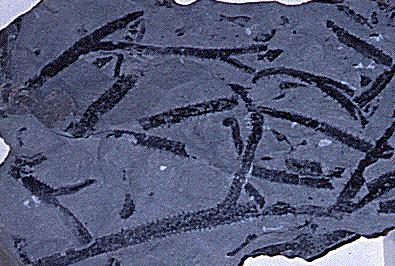Introduction to the Zosterophylls


Evolving from a rhyniophyte-like ancestor around the beginning of the Devonian, the Zosterophyllophyta is an extinct taxon of small, rather unprepossessing Devonian plants. Zosterophylls occupy a key place in the evolution of land plants; several fossils show characters that are otherwise very typical of the lycophytes. Though the evolutionary relationships of the zosterophylls have not yet been worked out completely, several taxa traditionally placed in the Zosterophyllophyta appear to be close to the ancestry of the Lycophyta.
Superficially, zosterophylls looked very much like rhyniophytes and like trimerophytes, the other two prominent plant groups of the lower Devonian. Zosterophylls lacked true leaves and roots, and photosynthesis was probably carried out all over the stems. Zosterophylls generally showed dichotomous branching -- each stem dividing into two branches of equal size. Like some trimerophytes, most zosterophylls were covered with enations, scale-like flaps of tissue that lacked vascularization and so were not true leaves.
But zosterophylls differed from other plants of the time in two main ways: their sporangia were round to reniform (kidney-shaped) and they were not born on the ends of branches, but on small stalks arranged in clusters along branches. These characters are also seen in the Lycophyta. In fact, some Devonian fossil plants, like Asteroxylon, have been placed both in the Lycophyta and in the Zosterophyllophyta by different paleobotanists. Thus the Zosterophyllophyta is probably a paraphyletic assemblage of early plants, including the ancestors and close relatives of the Lycophyta.


